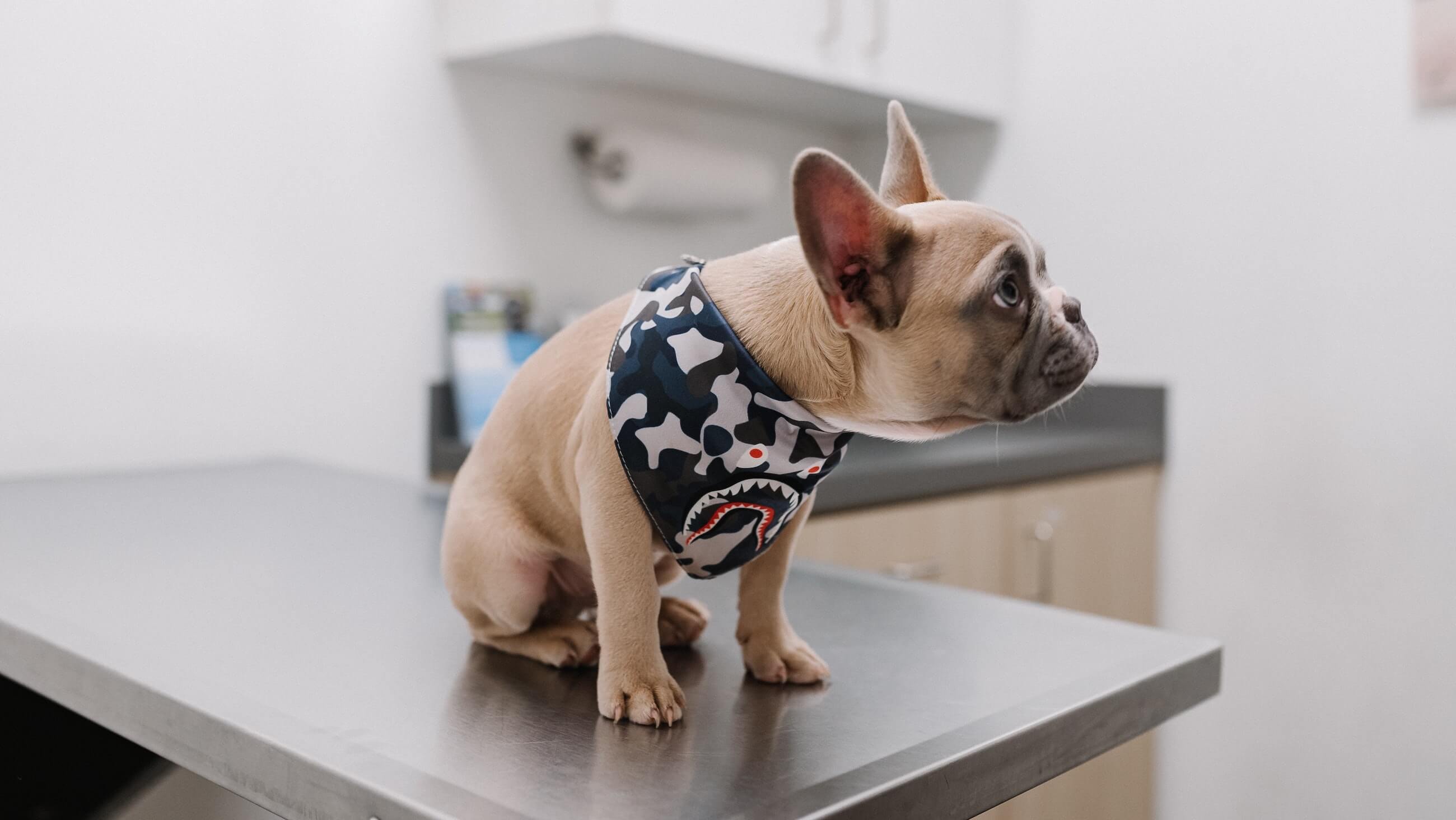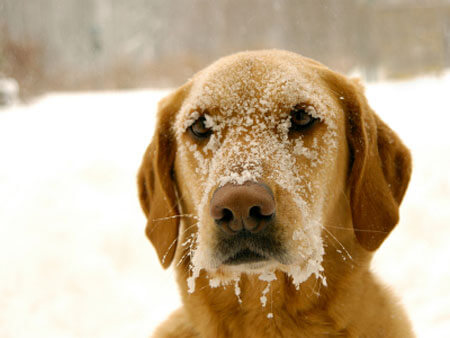Protect Your Pet Vital First Aid Tips for Pet Owners
Introduction
As a pet owner, ensuring the health and safety of your furry friend is paramount. Being prepared for emergencies and knowing how to administer first aid can make all the difference in critical situations. Here are some vital first aid tips every pet owner should know to protect their beloved companions.
Assessing the Situation
The first step in administering first aid to your pet is assessing the situation. Stay calm and observe your pet’s condition. Look for signs of distress, injury, or illness. If your pet is conscious and breathing, carefully examine them for any visible injuries or abnormalities. Assessing the situation allows you to determine the best course of action.
Contacting a Veterinarian
In any emergency situation, it’s essential to contact a veterinarian as soon as possible. Have your veterinarian’s contact information readily available, including their phone number and address. If your pet requires immediate medical attention, call ahead to inform the clinic of your arrival. A veterinarian can provide guidance over the phone and prepare for your pet’s arrival.
Handling Injuries Safely
When administering first aid to your pet, it’s crucial to prioritize safety, both for yourself and your pet. Approach injured pets with caution, as they may be scared or in pain. Use a muzzle or makeshift muzzle to prevent your pet from biting, especially if they are distressed or injured. Avoid putting yourself in harm’s way and prioritize your safety while providing assistance to your pet.
Addressing Bleeding
In cases of bleeding, it’s essential to control the bleeding as quickly as possible. Apply firm pressure to the wound using a clean cloth or bandage to help stem the flow of blood. Elevate the injured area if possible to reduce blood flow. If bleeding persists or is severe, seek immediate veterinary care. Do not attempt to remove foreign objects embedded in the wound, as this can exacerbate the injury.
Dealing with Burns and Scalds
Burns and scalds can occur if your pet comes into contact with hot surfaces or substances. Immediately flush the affected area with cool water to help reduce pain and prevent further damage. Avoid using ice or ice-cold water, as this can worsen the injury. Cover the burn with a clean, sterile bandage or cloth and seek veterinary attention for further evaluation and treatment.
Recognizing Signs of Choking
Choking is a life-threatening emergency that requires immediate intervention. Signs of choking in pets include difficulty breathing, pawing at the mouth, and excessive drooling. If you suspect your pet is choking, carefully open their mouth and remove any visible obstructions using your fingers or a pair of tweezers. Perform the Heimlich maneuver if necessary, and seek veterinary care promptly.
Managing Poisoning
Pets can accidentally ingest harmful substances, including household chemicals, medications, and toxic plants. If you suspect your pet has ingested a poisonous substance, contact your veterinarian or a poison control hotline immediately. Provide as much information as possible about the ingested substance and follow their instructions for treatment.
Treating Heatstroke
Heatstroke is a serious condition that can occur when pets are exposed to high temperatures for extended periods. Signs of heatstroke include excessive panting, weakness, vomiting, and collapse. If you suspect your pet is suffering from heatstroke, move them to a cool, shaded area immediately and apply cool water to their body. Seek veterinary care promptly for further treatment.
Administering CPR
Knowing how to perform CPR (cardiopulmonary resuscitation) on your pet can be life-saving in emergencies. CPR may be necessary if your pet is unresponsive and not breathing. Familiarize yourself with pet CPR techniques and practice on a CPR dummy designed for pets. Seek veterinary care as soon as possible after administering CPR.
Conclusion
By being prepared and knowing how to administer first aid, you can protect your pet and potentially save their life in emergencies. Remember to stay calm, prioritize safety, and seek veterinary care promptly for any serious injuries or illnesses. With proper care and attention, you can ensure the health and well-being of your furry companion. Read more about pet first aid tips





 It is now generally accepted that human diabetes is an immune disorder. There seems no reason to suppose that feline diabetes is any different. This particular immune disorder has the form of failure of the pancreas to produce immune system brakes down because of the burden put upon it, mostly a chemical burden. When you consider all the chemicals most pets are subject to, there is little wonder their immune systems go on strike. Drugs, vaccinations, pesticides in the garden, harsh cleaners in the house, but perhaps worse of all by virtue of it’s frequent ingestion, are the preservatives in their daily diet.A typical cat food is processed and comes in a box, packet or can. The dried cat food must contain high levels of preservative to keep it at room temperature, indefinitely, despite what the packet may say. Believe me, there’s no other way to have such a long shelf are particularly sensitive to chemicals, so readily succumb to them. A stay in a cattery may well overload them, as most catteries fastidiously clean their pens with strong disinfectants or bleach, to ensure there’s no cross contamination.There are several things you can do immediately, to help your cat overcome this serious disease, even if they have had it a while. You never know how much good you can do until you try.
It is now generally accepted that human diabetes is an immune disorder. There seems no reason to suppose that feline diabetes is any different. This particular immune disorder has the form of failure of the pancreas to produce immune system brakes down because of the burden put upon it, mostly a chemical burden. When you consider all the chemicals most pets are subject to, there is little wonder their immune systems go on strike. Drugs, vaccinations, pesticides in the garden, harsh cleaners in the house, but perhaps worse of all by virtue of it’s frequent ingestion, are the preservatives in their daily diet.A typical cat food is processed and comes in a box, packet or can. The dried cat food must contain high levels of preservative to keep it at room temperature, indefinitely, despite what the packet may say. Believe me, there’s no other way to have such a long shelf are particularly sensitive to chemicals, so readily succumb to them. A stay in a cattery may well overload them, as most catteries fastidiously clean their pens with strong disinfectants or bleach, to ensure there’s no cross contamination.There are several things you can do immediately, to help your cat overcome this serious disease, even if they have had it a while. You never know how much good you can do until you try. With the exception of a few true lovers of cats, Americans have always been less particular about the origins of their cats and their dogs. Cats are most commonly seen on farms and they worked to help keep the vermin population. As cats are becoming more of a companion of a firm hand, there was a growing interest cat breeds, their purity and pedigree. The Cat Fanciers’ Association is dedicated to the preservation of race and race 39 recognized cat breeds. You will find below are some of these species as well as information on the characteristics of race and history. Russian Blue – The Russian Blue is a nice, friendly chat with an appearance. These cats are dense, thick coats that are short in one color: blue. In agreement with the blue fur of cats have the bright green eyes and are known for their beautiful appearance as they are, for their modest provisions. Cornish Rex – While the Cornish Rex is similar to images of ancient Egypt cats it is from Cornwall, England in 1950 where he was discovered in a barn cats littler. These cats are different in appearance with an egg-shaped head and size, large, erect ears, and enormous yellow-green eyes. This cat is very rare that the dress is soft, fine, very short, and grows in the waves. The Cornish Rex is affectionate, player, and keeps his kitten antics as throughout his life. The Siamese-Siamese cat, originally from Thailand, is extremely intelligent and curious animal. It is thought to be the oldest anywhere. The Siamese cat is a people lover. It will be regularly tell his family how much he cares for them with his strong meow. Maine Coon – The Maine Coon is a large cat, Native American longhair cat. He is venerated in hand to the mouse of his talent. The Maine Coon is a social animal that is particularly good for families with children or dogs. Abyssinian-Although the name suggests that this cat is from Ethiopia (formerly Abyssinia), they are actually in India. The name “Abyssinian” came about when the cat was introduced in England by way of Abyssinia. Abyssinian is one of the most intelligent cats, and even if they are not “hug”, they love their people, are curious and want to help you with what you are working. American Wirehair – American Wirehair was seen in New York in 1966. The only cat was a spontaneous mutation in a litter of barn cats. Health is a relatively common genetic mutation, but the difference with the American Wirehair is because its characteristics have been organized in a unique way an effort was made to keep his blood and genetic model. Interestingly, this genetic mutation did not appear anywhere in the world other than the United States. The American Wirehair is docile and calm temperament and a great pet for a so-called “couch-potato.”…
With the exception of a few true lovers of cats, Americans have always been less particular about the origins of their cats and their dogs. Cats are most commonly seen on farms and they worked to help keep the vermin population. As cats are becoming more of a companion of a firm hand, there was a growing interest cat breeds, their purity and pedigree. The Cat Fanciers’ Association is dedicated to the preservation of race and race 39 recognized cat breeds. You will find below are some of these species as well as information on the characteristics of race and history. Russian Blue – The Russian Blue is a nice, friendly chat with an appearance. These cats are dense, thick coats that are short in one color: blue. In agreement with the blue fur of cats have the bright green eyes and are known for their beautiful appearance as they are, for their modest provisions. Cornish Rex – While the Cornish Rex is similar to images of ancient Egypt cats it is from Cornwall, England in 1950 where he was discovered in a barn cats littler. These cats are different in appearance with an egg-shaped head and size, large, erect ears, and enormous yellow-green eyes. This cat is very rare that the dress is soft, fine, very short, and grows in the waves. The Cornish Rex is affectionate, player, and keeps his kitten antics as throughout his life. The Siamese-Siamese cat, originally from Thailand, is extremely intelligent and curious animal. It is thought to be the oldest anywhere. The Siamese cat is a people lover. It will be regularly tell his family how much he cares for them with his strong meow. Maine Coon – The Maine Coon is a large cat, Native American longhair cat. He is venerated in hand to the mouse of his talent. The Maine Coon is a social animal that is particularly good for families with children or dogs. Abyssinian-Although the name suggests that this cat is from Ethiopia (formerly Abyssinia), they are actually in India. The name “Abyssinian” came about when the cat was introduced in England by way of Abyssinia. Abyssinian is one of the most intelligent cats, and even if they are not “hug”, they love their people, are curious and want to help you with what you are working. American Wirehair – American Wirehair was seen in New York in 1966. The only cat was a spontaneous mutation in a litter of barn cats. Health is a relatively common genetic mutation, but the difference with the American Wirehair is because its characteristics have been organized in a unique way an effort was made to keep his blood and genetic model. Interestingly, this genetic mutation did not appear anywhere in the world other than the United States. The American Wirehair is docile and calm temperament and a great pet for a so-called “couch-potato.”… Finding pet rabbit insurance is something that is of the utmost importance for not only your rabbit, but also for yourself. It’s no secret that trips to any veterinarian can quickly become expensive and the last thing any pet owner wants to do is become blindsided by their pet’s sudden illness. Having a solid rabbit insurance policy to back you up in case of an emergency is one of the best ways to solidify your bond between you and your rabbit.
Finding pet rabbit insurance is something that is of the utmost importance for not only your rabbit, but also for yourself. It’s no secret that trips to any veterinarian can quickly become expensive and the last thing any pet owner wants to do is become blindsided by their pet’s sudden illness. Having a solid rabbit insurance policy to back you up in case of an emergency is one of the best ways to solidify your bond between you and your rabbit. Feline herpes is also known as feline viral rhinotracheitis or FVR for short. The upper respiratory tract is affected by this illness. Caused by the feline herpes virus type 1 (FHV-1), it can affect a cat of any age or breed.
Feline herpes is also known as feline viral rhinotracheitis or FVR for short. The upper respiratory tract is affected by this illness. Caused by the feline herpes virus type 1 (FHV-1), it can affect a cat of any age or breed. I have recently returned from a safari around some of the greatest National Parks and Reserves in the beautiful country of Tanzania. To give you an idea of the kind of animals and scenes I saw in one of my favourite parks there, Tarangire, I have put together a short diary of my day there.
I have recently returned from a safari around some of the greatest National Parks and Reserves in the beautiful country of Tanzania. To give you an idea of the kind of animals and scenes I saw in one of my favourite parks there, Tarangire, I have put together a short diary of my day there. Parvovirus (commonly called Parvo) is a viral disease that affects dogs. It is far more common in puppies than adult dogs and can have serious ramifications for the infected animal, including death. Parvo grows best in the rapidly dividing cells of the dog?s intestines. As the virus attacks and kills these cells it causes massive diarrhea and halts or slows the creation of white blood cells. In young puppies it can often directly infect the heart, leading to death.
Parvovirus (commonly called Parvo) is a viral disease that affects dogs. It is far more common in puppies than adult dogs and can have serious ramifications for the infected animal, including death. Parvo grows best in the rapidly dividing cells of the dog?s intestines. As the virus attacks and kills these cells it causes massive diarrhea and halts or slows the creation of white blood cells. In young puppies it can often directly infect the heart, leading to death.